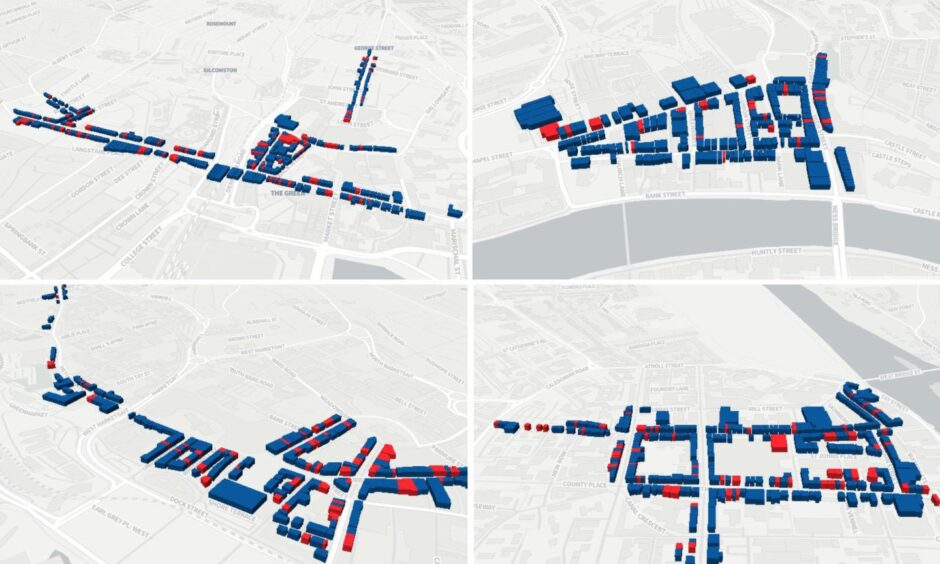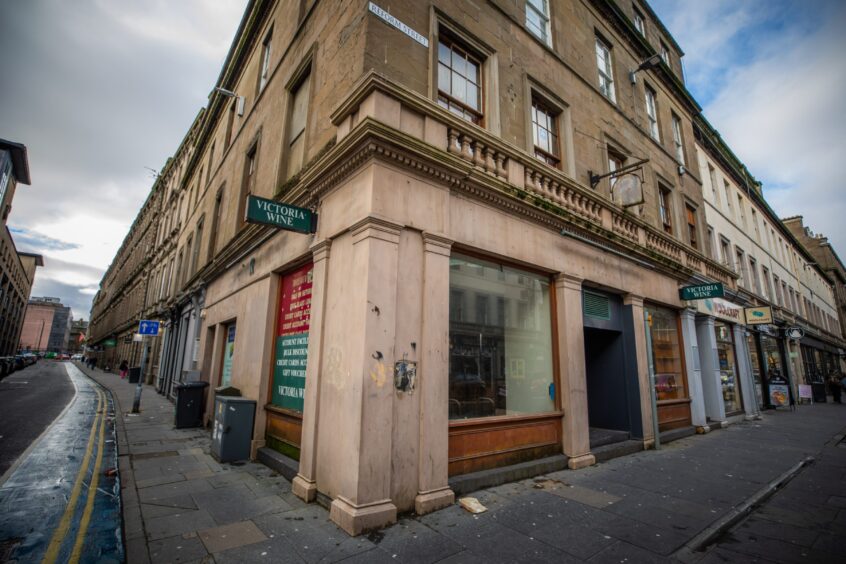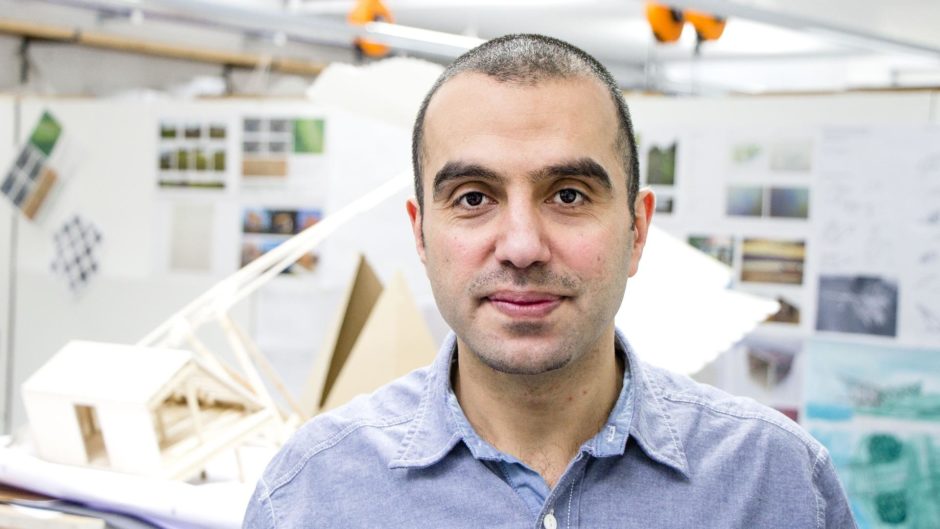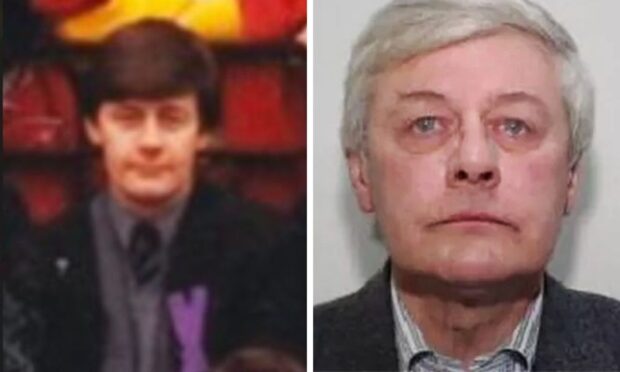
We are now tracking almost 2,000 high street and shopping centre units across half of Scotland’s eight official cities.
But how do the high streets of these four Scottish cities compare?
On the streets alone, this includes 362 premises in Dundee…
There may be three Union Streets and three High Streets across the four cities, but each has a distinct profile.
Now, our exclusive analysis reveals how Dundee streets are performing in the context of other Scottish cities as an expert suggests we may need to rethink the purpose of our high streets.
How healthy are the high streets?
Inverness has a vacancy rate half that of Aberdeen’s 19.95% at 9.9%, but it also has just 233 units on the streets tracked.
Dundee is second with a vacancy rate of 18.2% across all of the monitored units.
However, looking at the rates of unoccupied spaces by streets, Perth takes the lead with South St John’s Place where only a third of units are filled.
It is followed by Aberdeen’s Gaelic Lane but both have a very small number of units.
Four of the ten are based in Dundee including Commercial Street, Castle Street, Reform Street and Murraygate.
Those rates stretch over significantly more units in Dundee. The four streets in the city include 126 premises while the four in Aberdeen include only 74.
Meanwhile, the highest vacancy rate in Inverness of 16% on Union Street is well below the other cities.
Its emptiest street ranks 19th overall when all cities are compared.
On the flipside, Dundee is far less represented among the streets with the lowest vacancy rates.
There are five streets across the cities which do not have a single empty unit. These are all relatively small streets with less than 13 units.
But Dundee’s least vacant street, Perth Road, still has a vacancy rate of 8.33%.
From the top 20 most occupied streets, eight are in Inverness while the remaining cities have four each.
‘Reinventing the convenience’ of the high streets
Since we started tracking the data in June 2023, Dundee’s vacancy rates have increased from 15%.
But reversing trends of decline, may require us to “rethink the role of high streets”, according to one expert in urban design.
Dr Husam AlWaer said: “The high street is not a fixed entity.
“It is a moving entity, it keeps evolving and changing.”
He explained that with e-commerce taking away the convenience of shopping on the high street, they must have other draws to become a destination for locals.
“This is to me the question mark—how can we reinvent and reintroduce convenience into the high street,” he said.
“The role of the High Street has to be changed, but you have to give the people the reason why they should go there.”
A fresh role should include more focus on entertainment and leisure, but also on making the “overall picture of the place” more appealing.
Dr AlWaer said: “You have to look at the integrated approach to it. You need to think about quality. Is it walkable? Is it green?
“Quality public realms and public spaces with green infrastructure integration could be a way to brand those high streets and to give them more of a role to play.
“The high street is also not about nine to five. To me the role of the high street within 24 hours of the day is really so important.”
This includes more “community anchors” like libraries which give residents more reasons to visit and “stay on the streets” and initiatives to support businesses such as changes to VAT for online retail.
But the current profile of the four cities shows that entertainment is currently a low priority for the high streets.
What thrives in Dundee?
The type of businesses occupying the high streets are broadly similar across the four cities.
Looking at just the occupied units, shopping premises dominate the high streets in Inverness and Perth.
But in the two bigger cities, food and drink takes a slight edge. Shopping is the second most popular category in both Dundee and Aberdeen.
But Dundee has the lowest proportion of shopping units across the four cities.
It is the only city where less than 30% of the currently occupied units are shops.
However, where it lacks in shops, it makes up for it with the food and drink scene.
More than a third (36.5%) of occupied units in Dundee fall under the category.
Entertainment accounts for less than 2% of total occupied units in each of the cities.
Yet a closer look reveals further differences between the four cities.
Dundee, on the other hand, has the lowest proportion of mobile phone repair shops from the four.
What about the shopping centres?
The shopping centres also reveal interesting distinctions between the cities.
Overall, we track 427 units across eight shopping centres located within the hearts of cities themselves.
On average across all of them, a fifth of units are empty. For comparison, the average across all high streets is 16.93%.
However, Dundee’s performance is clearly split between the relatively low vacancy rate of 11.8% in the Overgate to bottom of the table Wellgate at 46.2%.
Both of the smaller cities remain very close to the average. Peth’s St John’s shopping centre has a vacancy rate just below (19.4%), while Inverness is just above it at 20.3%.
Union Square in Aberdeen has the lowest rate of empty units as well as having the highest total number of units.
It is also the only one of the centres where more than a third of occupied units are food and drink related.
But St Nicholas, which had the second lowest vacancy rate, sticks to the brief with 15 out of 17 units filled by shops.
Meanwhile, the Wellgate had the lowest proportion of premises filled with shops at 57.14%.
The Wellgate’s high proportion of other services also stands out among the other centres.
The many specialties of a city’s shopping centres
Broken down by subcategories, there are clear splits between the shopping centres in the four cities.
Perth’s St John’s Shopping Centre has more specialty shops categorised as ‘other’ on our list such as CeX.
Almost a third of occupied units are currently other shops while in the other four cities it is below a fifth.
But Aberdeen storms ahead when it comes to restaurants and cafes within its centres.
Dundee has a higher proportion of clothes shops than the other cities.
And, mainly due to the Wellgate, the highest ratio of third sector units.
Meanwhile, it has the lowest proportion of jewellery shops within the centres.
The proportion of shoe shops in Dundee’s shopping centres is higher than the other cities at 5.26%.
Have your say
Dr AlWaer said that positive changes to the high streets can be “incremental”.
“We can really link the high streets with all agendas: health, wellbeing, walkability, cycling, living.
“But you need to bring business people with you.”
He added: “I like the incremental approach to the high street because you build cultural change, you build trust, you bring community with you.”
To engage with our community on the topic of high streets, The Courier has recently launched an initiative aimed at finding solutions for the city’s problems– Dundee Matters.
Our first focus is on the high streets and as part of that we are looking for you to have your say in our survey.
Your responses will help guide our high street summit we are set to host this May. It is event with a focus on finding solutions which can help reverse the trajectory of the city centre.



